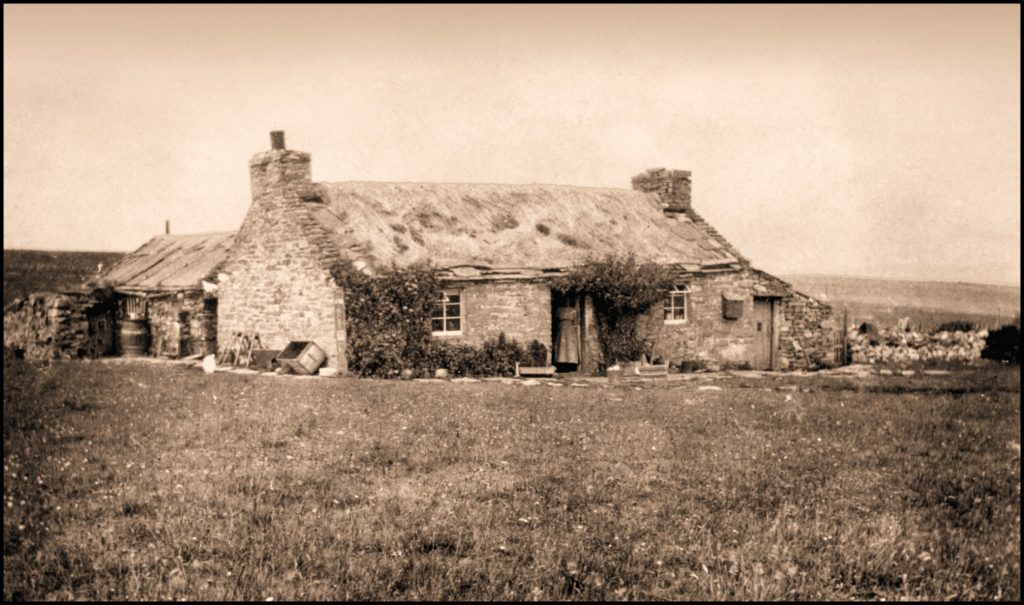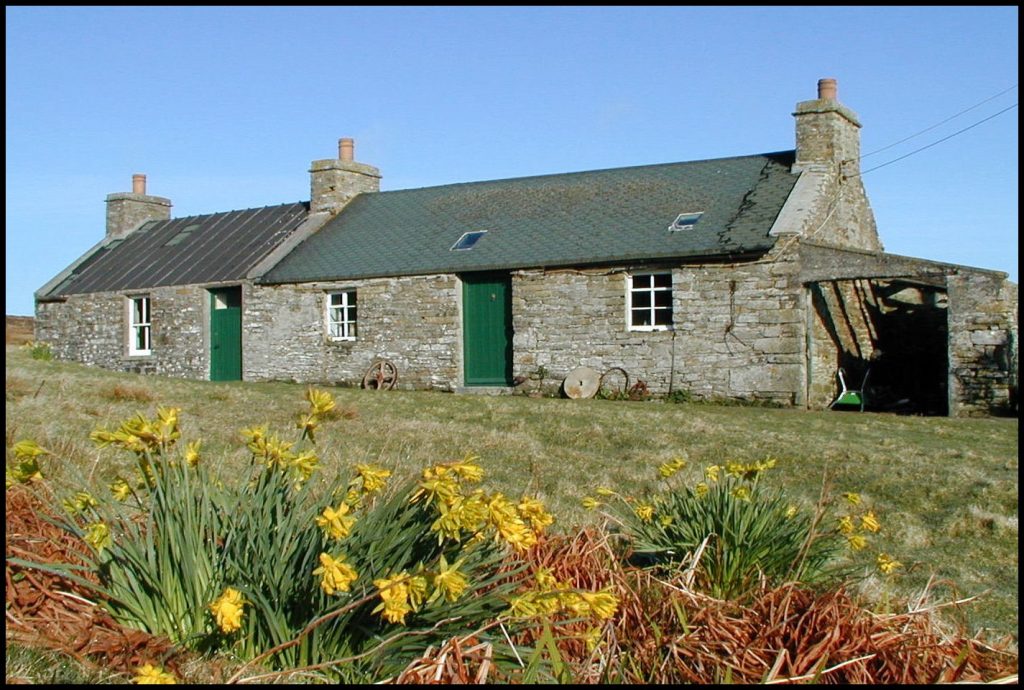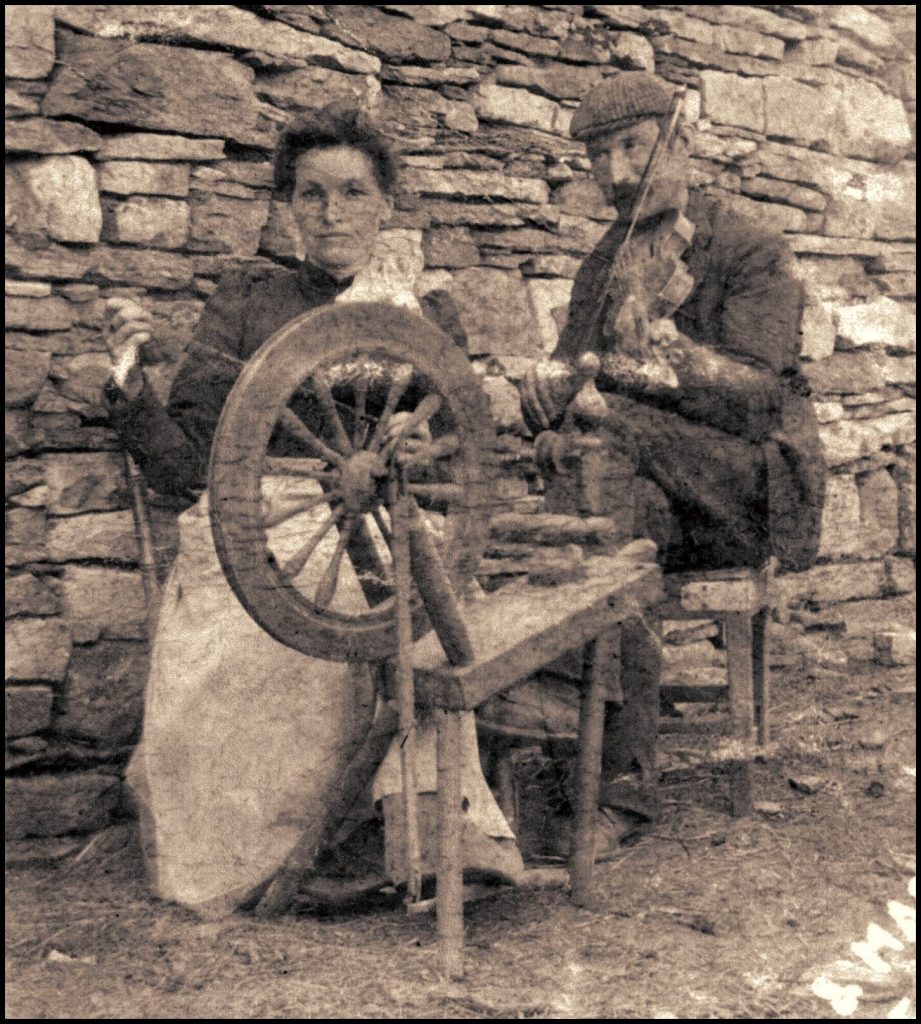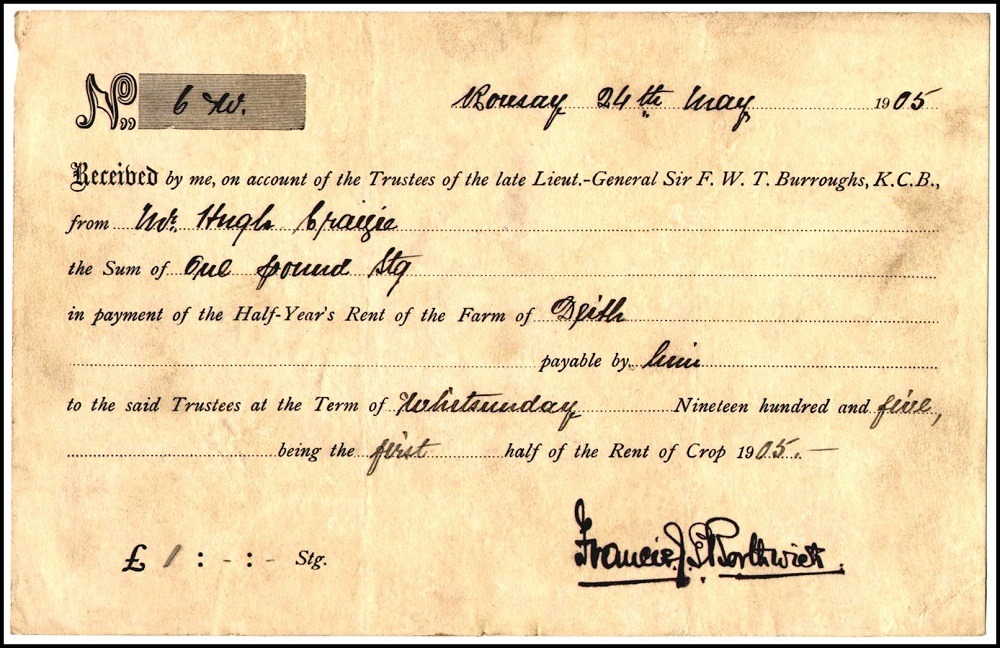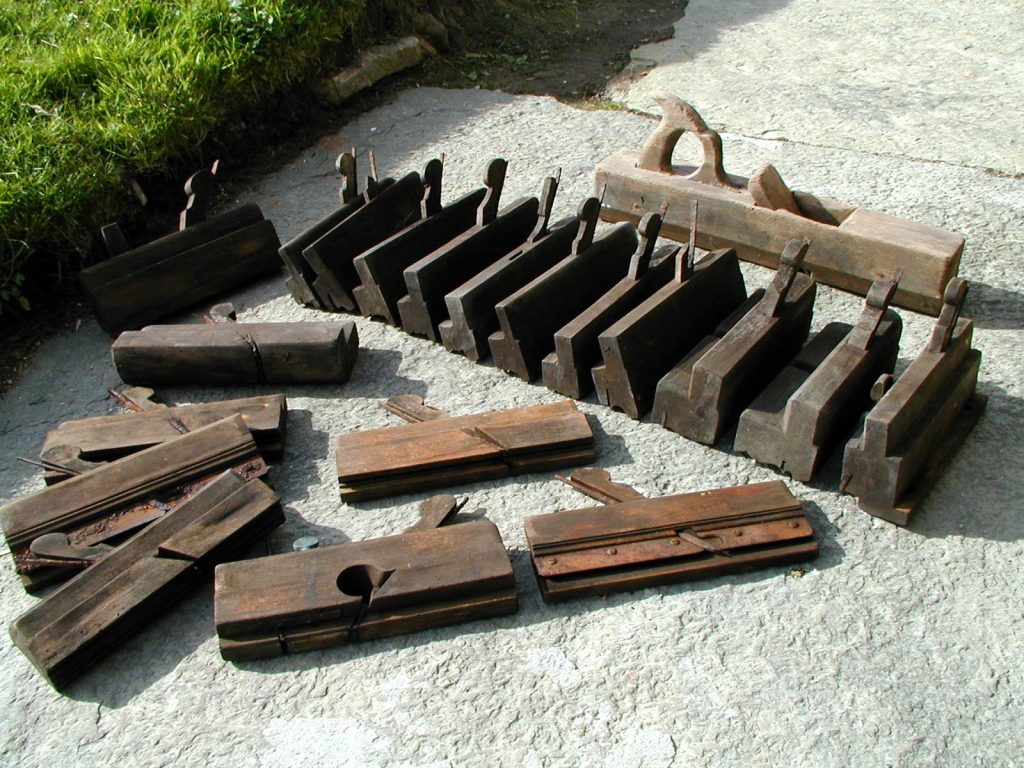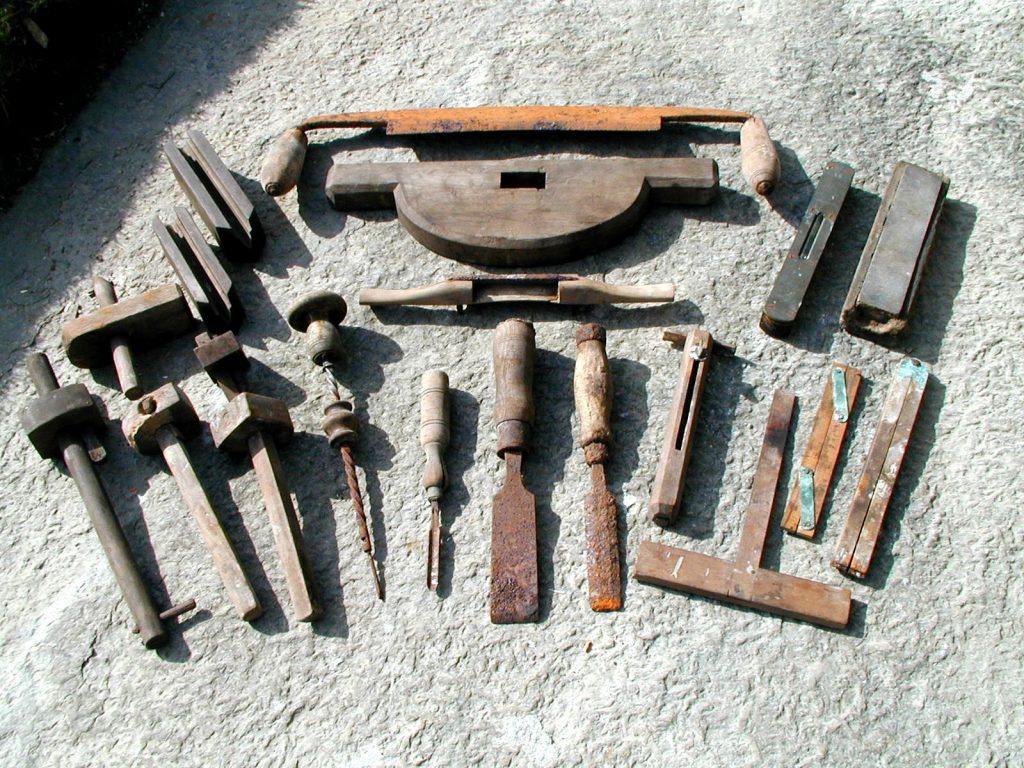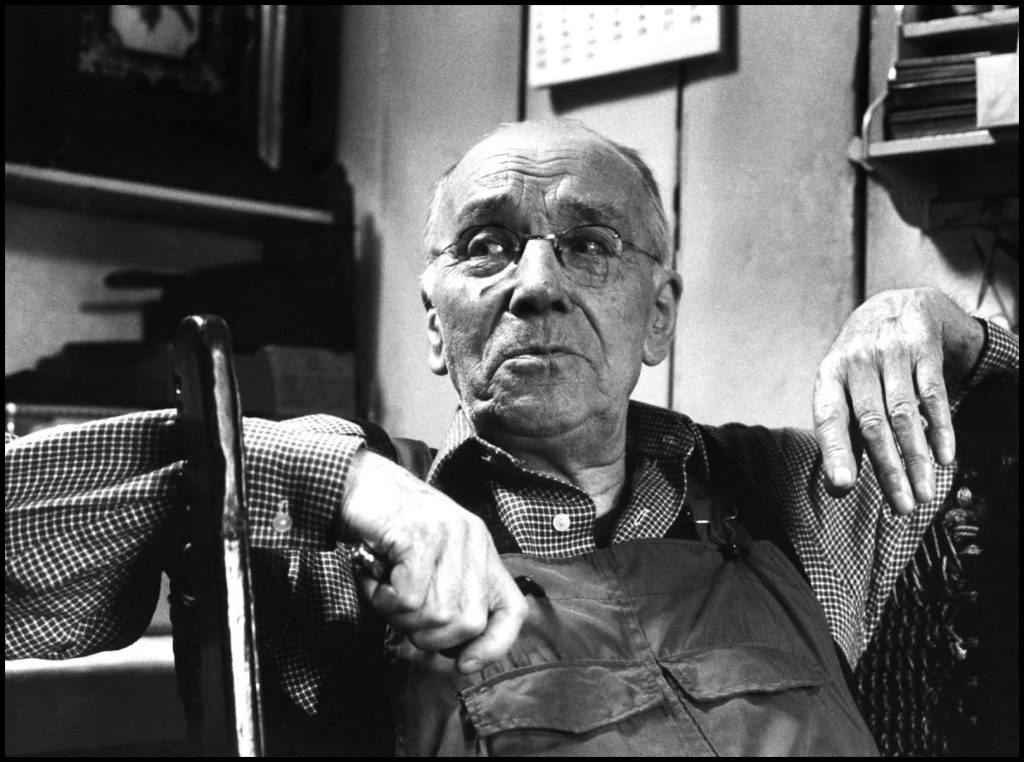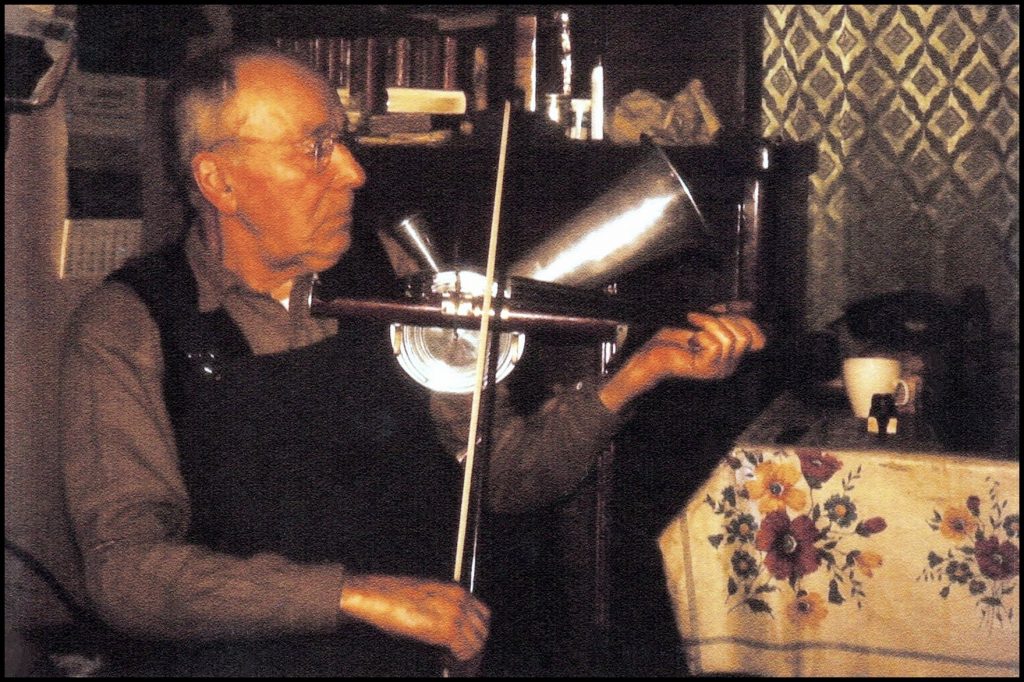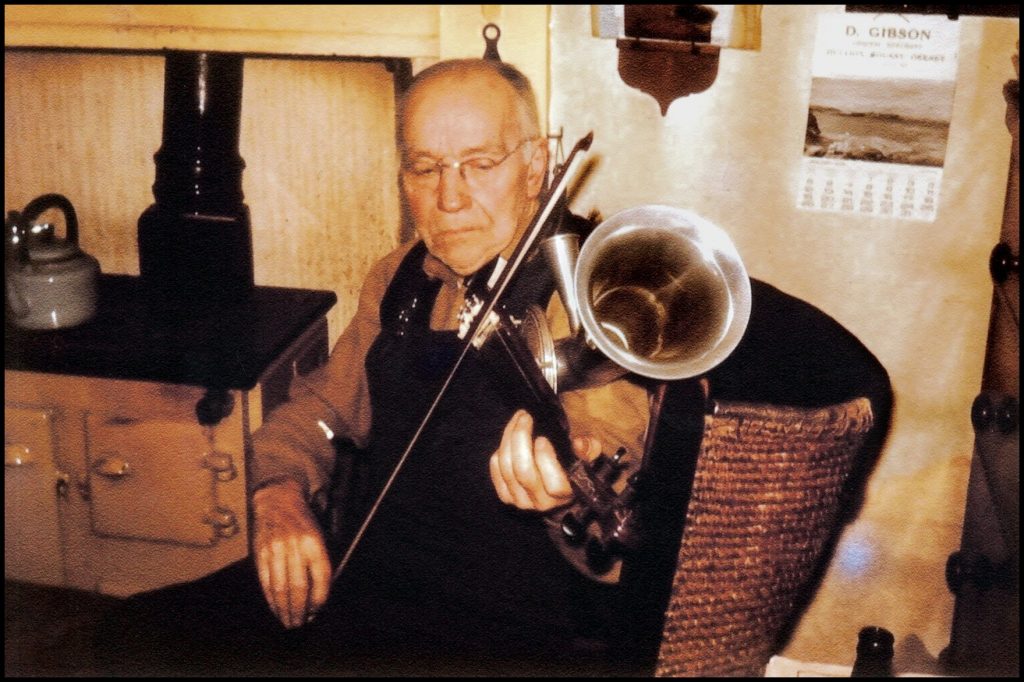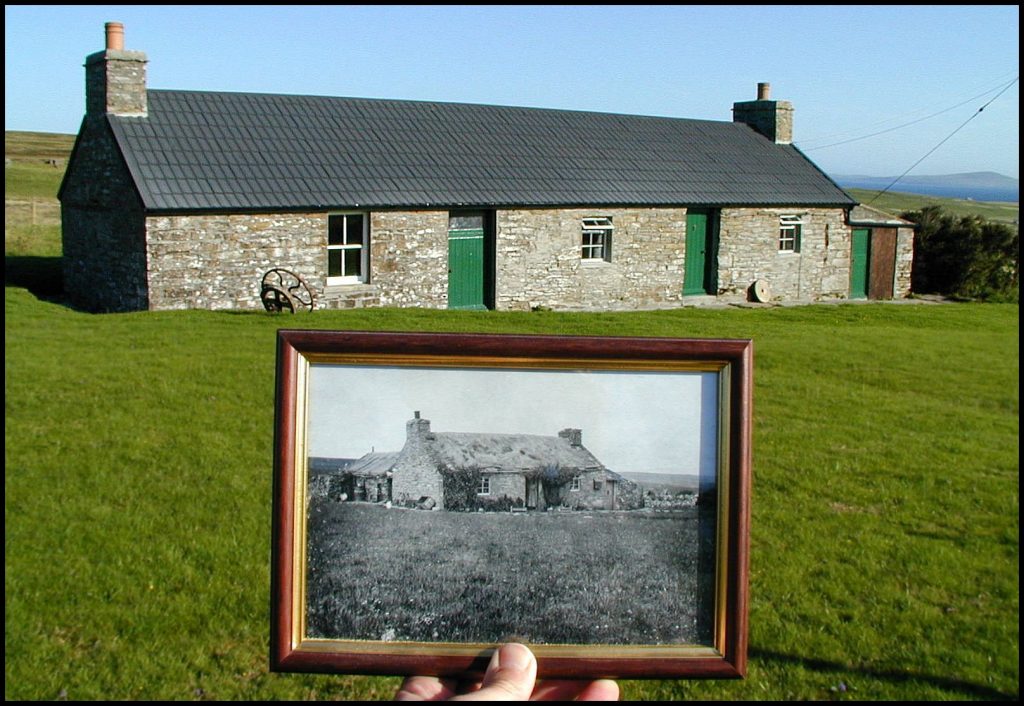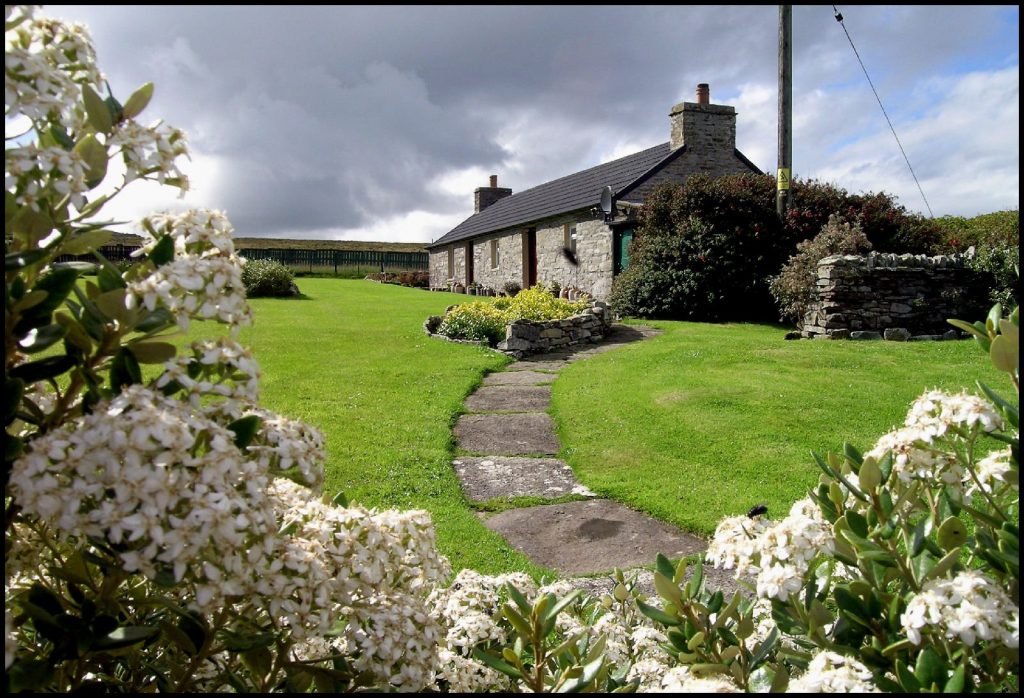Quoydeith was an old croft in Wasbister, about 250 yards east of the old smiddy above Quoygray. Known as Quoydie in the Uthell Buik of 1601, and Quoydeith in a record dated 1721, it was variously occupied by the likes of Andro Smyt, John Alo, Rolland Corss, and in 1706 by Hugh Cooper. According to Hugh Marwick in his book The Place Names of Rousay the origin of the name is uncertain but perhaps derives from the Old Norse word spelt dý, a boggy place.
Thomas Inkster and his wife Christy Marwick were later tenants of Quoydeith and George, their only child, was born there in 1781. He married Jean Marwick, daughter of John and Jean Marwick, at Cogar in 1814 and they had six children, all born at Quoydeith; Hugh, who was born on January 6th 1815, Mary, on March 18th 1816, Margaret, on August 4th 1818, George, on July 7th 1820, Janet, on May 10th 1823, and John, who was born there on February 11th 1827. In 1843 George Inkster was paying an annual rent of £4.10.0.
In 1844 George and Jean’s daughter Margaret married Magnus Alexander of Cairn and between 1845 and 1860 they had six children. In 1849 Margaret’s sister Janet married Robert Inkster of Tou, later Pliverha’, and they had five children. George and Jean Inkster moved to Lingro near Falquoy, and it was there that Jean died in 1857 at the age of 70. Husband George died there ten years later in his 86th year.
In 1847 Hugh Craigie was the tenant of Quoydeith and he was paying rent of £3.0.0 per annum. Hugh was the son of Hugh Craigie and Janet Marwick of Brough, Westside, and he was born in 1778. In 1803 he married 22-year-old Isabel Craigie, and between 1804 and 1828 they had ten children; Hugh was born on September 11th 1804; Janet on May 14th 1807; another Janet was born on July 20th 1808; Henry was born on January 30th 1811; Mary on April 14th 1813 (she died in 1858 at Deith, unmarried); and William who was born on September 7th 1815. All these children were born at Brough.
The family then moved from the Westside to Quandale and the next child, Betty, was born at Nether Quandale on November 19th 1817; the other three children were born at Mid Quandale; Grace, on April 20th 1820; Peter, on June 15th 1823; and finally John, who was born on March 11th 1828.
The census of 1851 described Hugh Craigie as a 73-year-old farmer and his wife Isabel was in her 70th year. Living with them was their 37-year-old unmarried daughter Mary who was ‘employed at home’, and 23 year-old son John, an agricultural labourer.
Isabel had died by 1861, the census of that year describing 83-year-old Hugh as a widower farming seven acres at Qouydeith. In 1856 his son John, a ploughman, married Margaret McKinlay, daughter of William McKinlay and Mary Craigie originally of Curkland, Egilsay, and she was born on October 22nd 1825 when they lived at Fa’doon on the south-eastern slope of Kierfea Hill. In 1864 Quoydeith was pulled down on the orders of the laird, and a new house, named Deithe, was built, higher up the hill, halfway between the present day Breahead and Blackhammer.
John Craigie, who then earned his living as a mason, was its first tenant, paying at that time rent of 17s.6d. In 1873 the extent of the land at Deith covered 13 acres, for which John paid an annual rent of £1 15s, and in 1880 £3.0.0. Like many other Rousay crofters John had his rent reduced in 1888 by the Crofters Commission. His reverted to the sum of £1.15.0.
Still living at Deithe in 1891, John was then described as a 63-year-old crofter and fisherman and wife Margaret was in her 65th year.
Hugh Craigie was the son of Hugh Craigie and Ann Gibson of Turbitail and he was born on August 30th 1866. Hugh later married Margaret Inkster of Upper Cogar, who was the same age as him. After John Craigie passed away Hugh and Maggie moved into Deithe, where they raised a family of five children; Maggie Jessie, born on 5 February 1889; Mary Jane, on November 11th 1890; James Campbell Bruce, on October 2nd 1895; Hugh Gibson, on December 19th 1899; and Barbara, who was born on March 2nd 1893.
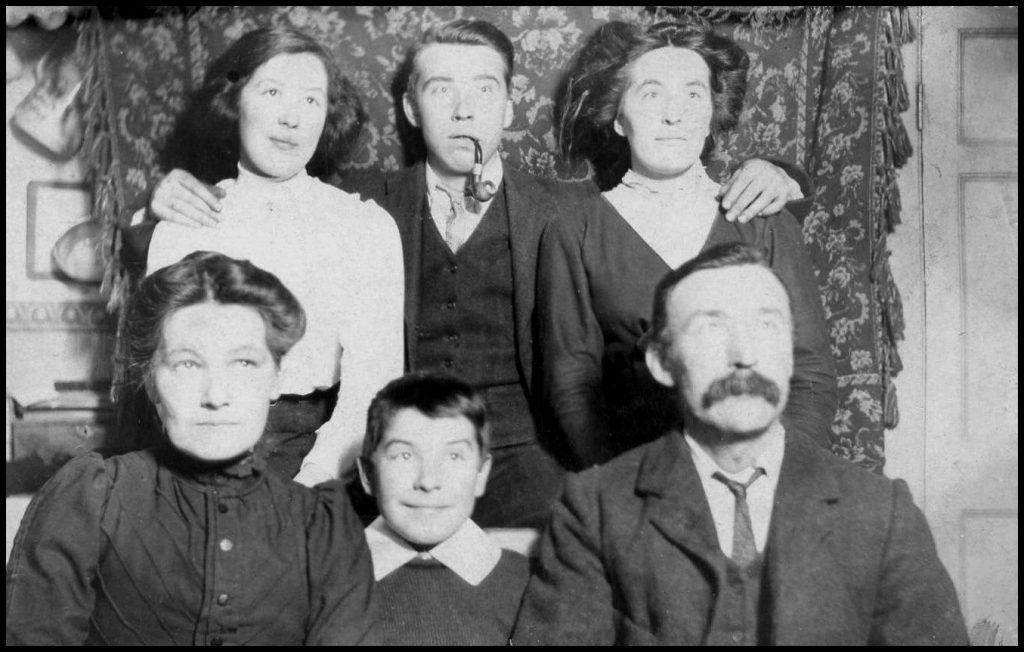
(Back row) Barbara, James, and Mary Jane (Neenie).
Hugh had a joiner’s business at Deithe. He was a highly skilled craftsman by all accounts, whose work can still be seen in many houses in the island. The tools of his trade, pictured below, still exist. Hugh Craigie died at Kirkwall on November 11th 1933 at the age of 67 and his wife Maggie passed away in her 81st year, on November 19th 1947.
A collection of Hugh’s woodworking tools, found in the old byre here at Deithe. Some of these have been passed on to his great-grandson in Canada who is also a fine craftsman in wood.
Maggie Jessie married Hugh Inkster of Westness and had a son, Hugo, who grew up to be a renowned fiddler, and Mary Jane married Jock Sutherland of Stromness. Hugh Gibson Craigie emigrated to Canada in 1923, living initially in Ontario, then Owlseye Lake, Alberta and finally settling in British Columbia.
In 1930 James Campbell Bruce Craigie married Maggie Jessie Flaws of Hammerfield, Wester, and they had three children; Neil, Francis, and Thomas.
Jim playing his Stroh fiddle in the early 1970s – an ideal instrument for playing at dances in the days before amplification. The photos were taken by Nigel Firth, Vacquoy, a talented musician in his own right.
James was a postman, firstly in Rousay and later in Sandwick where he lived at Ravenswood, Quoyloo. He is best-known for his fiddle music, having composed many, many tunes over the years. Tunes with a Rousay flavour such as Maggie Watson’s Farewell to Blackhammer, Netherbow, The Road the Hammer-Chunky, Whal’s Rost – the list is endless, and his music is still played and recorded today by a wealth of Orkney musicians. Jim o’ Deithe ended his days at St Peter’s House in Stromness and died in 1977 at the age of 82.
The following obituary, written by Nigel Firth, was published in The Orcadian.
On March 10 came word of the death that morning, in hospital in Aberdeen, of Mr James C. B. Craigie, of Deithe, Rousay. He had been in poor health for some time.
James Campbell Bruce Craigie was born at Vacquoy, Rousay, in 1895, one of five children. His father Hugh Craigie, a joiner, was related to the widespread Gibson family of Langskaill, and his mother, Margaret Inkster of Barebraes, was a descendant of the Inksters who owned the Saviskaill estate for a few years in the early 19th century. Mr Craigie was named after his uncle, J. C. Bruce, who came from Ballachulish and was for many years teacher in Wester.
In 1899 the Craigie family moved from Vacquoy to Deithe after the death of Chekki o’ Deithe (John Craigie – no known relation). Mr Craigie attended the Wester School until he was 14. It happened that his first teacher was Jessie Marwick, a sister of Dr Hugh Marwick.
In the summers he worked part time as a hirdie boy at Innister, Fealquoy and Langskaill, going to school each day from his place of work. In those days there were few wire fences and not every field was dyked, so cattle had to be kept off growing crops by tethering (on the smaller farms) or by hirding (on the larger).
On leaving school he started full time farm service at Langskaill with David Gibson, for three years. At 17 he was hospitalised by a kick from a horse and afterwards he started an apprenticeship with his father. In 1914, aged 19, he enlisted, serving two years ay Hoy Battery and then with the Royal Artillery in France. He had at least one narrow escape. A front-line position his unit had occupied for weeks was wiped out by shellfire a few hours after they had been ordered to a new position.
Mr Craigie was demobbed in 1919 and worked at the naval airdrome scheme at Swanbister; then from 1920 was three years in Glasgow as a joiner at Beardmore’s shipyard, fitting prefabricated woodwork into liners. He then returned to Rousay as a joiner. One of his jobs was the making of new wooden teeth for the gearing of the Sourin mill. In the twenties he and his father usually did three weeks’ fencing in the district each spring. This mostly comprised fence-shifting. Only the grazing fields were fenced at that time, so the crop rotation meant that one or two fences had to be moved each year.
In the late twenties he started with the Post Office. At first, deliveries were on foot, then by push bike. When mail vans were introduced fewer men were needed and Mr Craigie was offered a job as postman in Quoyloo. He accepted and was there 17 years, until his retirement in 1955. He came back to Rousay in 1957.
In the short time I have known Jim o’ Deithe I have come to value his friendship highly. His humour, his kindness, his independence, his originality of thought and synoptic outlook, his painstakingness and regard for excellence have made a deep impression. In two areas we were both interested in – music and local history – I learned much from him and came to respect his achievement. I suspect this would have been true in several other fields as well, could I have judged them. We are sad at his passing, but are richer for having known him. He will not soon be forgotten.
===========================
Before and after: Now I’m the owner of Deithe…and very proud to say so too.
